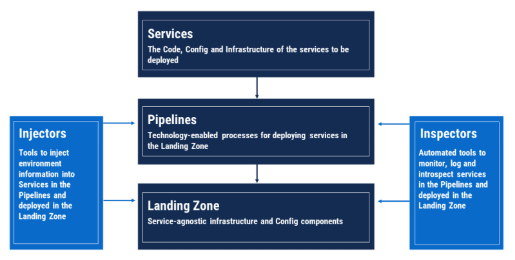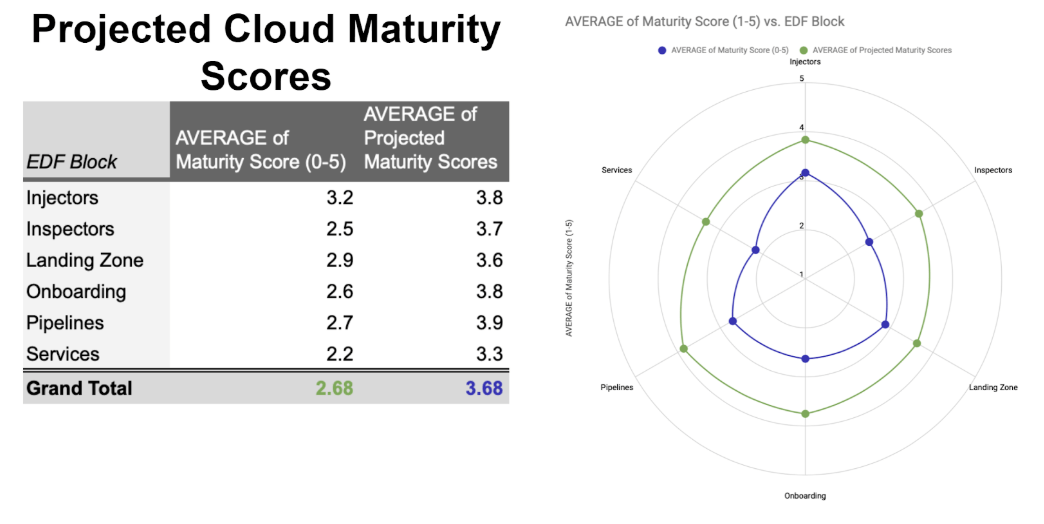Cloud Maturity Assessment: An Empirical Approach
- June 30, 2020
Assessing Cloud Maturity
Let’s start by setting the stage. Our example company is a Fortune enterprise with hundreds of locations and nearly 100,000 employees. It faces extreme pressure to innovate, providing smart solutions to its commercial customers. Cloud adoption offers a clear path for the company to elevate its agility and ability to react to customer demands at the pace of the market. However, it’s important for the firm to understand what resources it has and where gaps exist. And, so it was that we began a cloud maturity assessment for the firm.
The Assessment Approach
DORA (DevOps Research & Assessment) reports in its 2019 Accelerate State of DevOps Report that there are four primary areas of capability that directly relate to DevOps success. Moreover, these four areas are also positively affected by guidance that can drastically move the needle toward greater maturity. We used DORA’s four pillars — basic automation, monitoring, clear change approval processes, and culture — along with its software delivery and operational performance model as a foundation for the assessment work.
Enterprise DevOps Framework
We combined the DORA model with our Enterprise DevOps Framework (EDF), a model for obtaining DevOps maturity in the cloud, specifically with regard to automation, monitoring, and change processes.
Based on these frameworks, Flux7 assessed the current maturity of the company’s cloud architecture, processes, governance, and support for developer agility including things like the onboarding process for development teams, security policies, reusable components and more. To obtain a 360-degree picture, we made sure to interview team members from across development, operations, and security in three different continents.

It’s important to note that assessment questions will differ depending on the company and its objectives. For example, if an enterprise already meets basic automation goals, that should trigger a deeper set of questions around intermediate or advanced automation to unearth opportunities there. That said, there should be a set of core questions everyone is asked, e.g. “What tools do you use to detect old/vulnerable software?” to ensure system security.
To establish which questions to ask your organization, break your systems down into the EDF framework, determine your business drivers for cloud adoption, and consider specific ways in which your organization applies each of DORA’s four pillars. This will help you develop a matrix of thoughtful questions that will drive insights into your organization’s cloud adoption capabilities.
For each question, answers are tracked on a spreadsheet and assigned a score ranging from zero to five. Note that most organizations rank two or three in most areas.

Scoring and Scaling Results
The cloud maturity assessment is focused on evidence-based results. Given how the firm answered the assessment questions and its goals, we were able to score and scale its results. This information allowed us, in turn, to give the firm practical guidance on where and how it can make an impact on its maturity moving forward.
This chart, for example, helps the firm see its current maturity scores across the EDF while also allowing it to visualize potential score improvements.

With this scoring, the company now has a sound idea of where its maturity lies. Moreover, it also understands the delta between its current state and its projected future maturity. Taking the results one step further, we next mapped the answers and maturity scores to DORA’s model, providing the company with specific mechanisms to reach a stated goal. For example, the company had a goal to improve its software delivery performance. Culture, clear change processes, continuous delivery, and cloud are proven capabilities that will help it deliver. The end result are suggested areas for improvement like, “Encourage curiosity and do not penalize people for saying, ‘I don’t know.’”
Based on this feedback, the firm is now able to make informed decisions about how to fully operationalize, secure, and automate its cloud platform usage.
While every organization starts in a different place with its cloud maturity, we are all on a path to improvement. And, measuring an organization or team’s cloud capabilities is a very important first step to ensure a successful migration and use of cloud technologies. Measure your readiness, build an effective cloud transformation strategy, and drive an effective execution plan with a Cloud Maturity Assessment.
Subscribe to our blog




